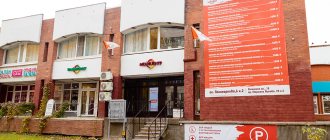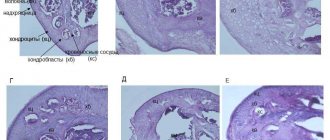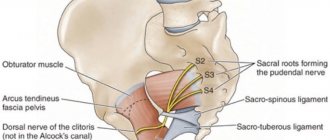Osteoporosis manifests itself in the loss of bone density, its structural changes, as a result of which bones become thinner, more fragile, and more likely to break. It most often affects women after menopause. However, it occurs in men and children. In Russia, in people over 50 years of age, osteoporosis is detected in 27% of men and 34% of women.
Typically, bone density measurements during densitometry are performed at the level of the lumbar spine and at the level of the femoral neck.
Densitometry is effective in tracking the results of therapy for osteoporosis and other diseases and conditions that cause bone loss. The study helps to accurately assess the risk of fractures.
Indications for use
Bone density assessment is carried out in case of frequent fractures and dislocations, back pain for no apparent reason. It is necessary for diseases that cause disturbances in mineral metabolism. These include diabetes mellitus, pathologies of the kidneys, liver, and gastrointestinal tract.
Indications for densitometry are also:
- long-term use of hormonal drugs;
- pathologies of the body's endocrine system;
- neurological diseases;
- disturbance of calcium-phosphorus metabolism;
Densitometry is useful for preventive purposes. It is prescribed to people at risk of osteoporosis. It includes people over 40 years of age, women during pregnancy, lactation and menopause.
Possibilities of densitometry in the diagnosis of osteoporosis
Lack of calcium in bones can lead to osteoporosis
The density of human bones is maintained due to its constant renewal. If the balance of bone tissue renewal and destruction is disturbed, then a person begins to develop osteoporosis. This is a fairly common disease caused by the fact that bone mineral density begins to decrease, which causes increased fragility. The consequences of this condition of the bone tissue can be severe and complex fractures.
Osteoporosis is considered an age-related disease; in people over 45 years of age, approximately 70% of fractures are a consequence of this disease. However, osteoporosis can now appear at an earlier age. Moreover, more and more people are starting to get sick. According to recent research, every minute two people in Europe suffer a fracture.
Every year the number of people with “fragile” bones is steadily increasing, and by 2050 there will be about 6.5 million such patients. This is due to the fact that people move less and less, and many of them simply forget about the need for proper nutrition. In addition, hormonal disorders, smoking and addiction to alcoholic beverages also affect the development of osteoporosis.
Method for detecting osteoporosis in the early stages
You should not treat this disease as a death sentence. In the early stages, osteoporosis is completely curable. Modern technologies have made it possible to diagnose this disease in the early stages using densitometry. This is a completely painless X-ray test of bones that determines how much calcium is in the bones. The condition of bone tissue depends on mineral density. Densitometry helps diagnose osteoporosis at an early stage of development and assess the risk of fractures.
Densitometry can be one-photon or two-photon. With single-photon densitometry, the bones of the lower leg, forearm and hands are examined. Two-photon scanning is applied to the spinal column and proximal femur. In these parts of the skeleton, the bone tissue is the least dense, therefore, with osteoporosis, fractures are most often observed here, which are extremely difficult to heal.
Dr. Bobyr's clinic has a specially equipped room for both types of densitometry. The examination is painless and does not require special preparation. After the examination, the clinic specialists only need a few minutes to process the information received and immediately provide the results of the diagnostics to the patient.
Who needs densitometry?
Like every disease, osteochondrosis develops in certain groups of people. If a person belongs to at least one of them, then once every two years he must undergo a bone tissue examination. First of all, these are women during menopause, when the calcium content in their bone tissue begins to decrease.
People with bad habits also need to undergo a similar examination; smoking and alcohol disrupt metabolism, which can cause bone fragility. In addition, bone densitometry should be performed for people suffering from radiculitis and asthma, patients taking anticonvulsants, diuretics, and people whose limbs often break.
According to the doctors at Dr. Bobyr’s clinic, the main reason for the occurrence of severe forms of osteochondrosis is the lack of awareness of the population. People do not think about the danger of this disease and are in no hurry to undergo timely diagnosis.
At an early stage, it is still possible to prevent osteochondrosis from developing.
To do this, you need to get rid of bad habits, lead a physically active lifestyle, supplement your diet with foods high in calcium and begin regular treatment prescribed by your doctor. Author: K.M.N., Academician of the Russian Academy of Medical Sciences M.A. Bobyr
Densitometric research methods
Densitometry can be carried out using different methods: ultrasound, x-ray or MRI. The principle of their operation is based on how the signal sent by the device changes when it reaches bone tissue. Depending on bone density, the speed of ultrasound propagation, the degree of absorption of X-ray radiation, or the response to the influence of a magnetic field changes.
The choice of method depends on which part of the body is being examined. Contraindications, if any, are also taken into account. For example, x-rays should not be performed on women during pregnancy. MRI is contraindicated for people with a pacemaker or other metallic debris in the body. Ultrasound examination is not possible for fractures and other tissue damage.
The “golden” standard for diagnosing osteoporosis is x-ray densitometry.
The study is carried out in three zones - lumbar vertebrae, femoral neck, forearm, fractures of which pose the greatest danger.
Using X-rays, doctors can see and evaluate bone fractures and other injuries to the musculoskeletal system. However, traditional x-rays are not the best way to measure bone mineral density.
To accurately diagnose osteoporosis, doctors use an improved form of x-ray called Dual-Energy X-ray Absorptiometry, abbreviated DXA or DEXA. This is densitometry.
Currently, DEXA X-ray densitometry (bone densitometry) is the standard method for measuring bone density. Unlike ultrasound densitometry, which only determines the risk of developing osteoporosis, X-ray densitometry is the “gold” standard for diagnosis.
How is densitometry performed?
DEXA X-ray densitometry is a simple, non-invasive examination. During the examination, you should try to remain completely still so that the image is clear. No anesthesia is required. The examination is painless and the radiation dose is very low. You need to know your height and weight, the year of menopause for women. Clothes should be free of metal objects (they can be removed during the examination), hands should be free of watches, bracelets and rings.
Who interprets the results and how can I get them?
A doctor specially trained to perform DEXA examinations will interpret the densitometry results.
CAUTION, OSTEOPOROSIS! Osteoporosis is a disease in which bones lose their strength, become more fragile and can break easily.
Bone loss occurs gradually and is often diagnosed only after a complication has already occurred—a fracture of the spine or hip. According to the World Health Organization, osteoporosis ranks fourth among non-communicable diseases after diseases of the cardiovascular system, cancer and diabetes. Osteoporosis is the main cause of hip fractures, which are common in women over 65 years of age.
How is the procedure performed?
The method of performing densitometry depends on the chosen method. In most cases, the procedure involves the use of a densitometer - an ultrasound or X-ray machine designed to assess the level of bone mineralization. The general scheme of the study is as follows:
- The patient frees the area of the body to be examined from clothing and sits on the couch or lies down on the table. The doctor will tell you what position to take in each specific case.
- If the subject lies on the table, the apparatus is placed above him. If you only need to scan an arm or leg, a compact device is used, into which you place the limb.
- The doctor starts the machine and the scan begins. It may take from a few minutes to half an hour. The larger the area being examined, the more time is required.
After the scan is completed, the patient can get up and get dressed. The doctor collects the results and analyzes them.
Contraindications to densitometry
The procedure has no absolute contraindications. There are only relative ones:
- pregnancy status;
- the inability for the patient to take the desired position during the procedure and maintain it for several minutes;
- body studies carried out with barium, contrast agents, radioisotope scanning - densitometry is usually carried out 10-14 days after these tests;
- treatment with steroid drugs in high doses - the study can be carried out 6 months after discontinuation of the drugs.
How are the results deciphered?
To draw a conclusion about the condition of the patient’s bones, the doctor compares the results with established standards. It takes into account ideal values and changes associated with age-related demineralization. The result of densitometry is deciphered according to two data:
- T-score. It reflects deviation from ideal bone mineralization values. A score of 1 or higher is considered the norm. The lower it is, the less calcium the tissue contains. A significant decrease in mineral density is established with a T-score in the range of –1…–2.5. If the reading falls below -2.5 units, the patient is diagnosed with osteoporosis with a high risk of fracture.
- Z-score. It reflects the deviation of bone density from the average norm for people of the corresponding age. If the score is equal to or higher than the average value, the patient is not in danger. A low indicator indicates significant demineralization.
To restore normal density, the doctor may prescribe calcium-containing medications. Additionally, he identifies the causes of calcium metabolism disorders and selects treatment to eliminate them.
You can sign up for densitometry at the medical office. The procedure does not necessarily require direct indications. We can perform it for preventive purposes if you are predisposed to osteoporosis. If abnormalities are detected, the rheumatologist will prescribe drug therapy and adjust the diet, which will help increase bone mineralization and increase their strength.
Don’t put off your visit until tomorrow, when a breakthrough can happen today!
The sooner you do this, the greater your chances of maintaining the health of your skeleton, the more active your life will be even at an older age, and most likely it will be without pain and suffering.
What is needed to prevent osteoporosis?
- Systematically consume more foods containing calcium.
- Include in your daily diet foods containing essential amino acids (meat, fish, soy, legumes)
- Lead an active lifestyle: exercise daily, walk at least 10 km a week or at least 60 minutes a day
- Stay in the sun for at least 30 minutes a day (if there are no contraindications)
- Quitting bad habits (smoking, alcohol abuse, coffee)
Thus, in order to fight osteoporosis, you need to eat right, actively engage in physical exercise, often be in the sun, and provide your body with sufficient amounts of calcium and vitamin D.
Interpretation of examination results
The test determines bone mineral density. This score is compared to two norms—the norm for healthy young adults of the same sex (T-score) and the norm for age-appropriate adults/older healthy adults of the same sex (Z-score).
T-score
T-score
- this is the difference between the patient’s indicators and the norm for young people (standard). Positive T-scores indicate that the bone is denser than normal; negative - that bone density is reduced.
In general terms, T-scores are interpreted as follows:
- from -1 and above - normal density;
- from -1.1 to -2.4 - osteopenia (low bone mass);
- from -2.5 and below - osteoporosis.
The T-score is used to assess fracture risk and determine the need for treatment.
Z-score
The Z-score is calculated in the same way as described above. If the score obtained is very low or very high, there is a need for further examinations: x-rays, biochemical studies, bone biopsies.
Preparation
- On the day of the examination, you can eat any food. The only thing you should avoid is calcium supplements 1 day before the procedure.
- During the examination, the person remains clothed. You need to wear loose, comfortable clothing - without zippers, belts, metal buttons or other metal elements. You cannot keep keys or wallets in your pockets.
- Before the procedure, the doctor may offer clothing that is more comfortable for examination, ask to remove glasses, jewelry, and removable dentures with metal elements.





![Table 1. Main risk factors for AP and bone fractures [2]](https://shoes-clinic.ru/wp-content/uploads/tablica-1-osnovnye-faktory-riska-op-i-perelomov-kostej-2-330x140.jpg)

